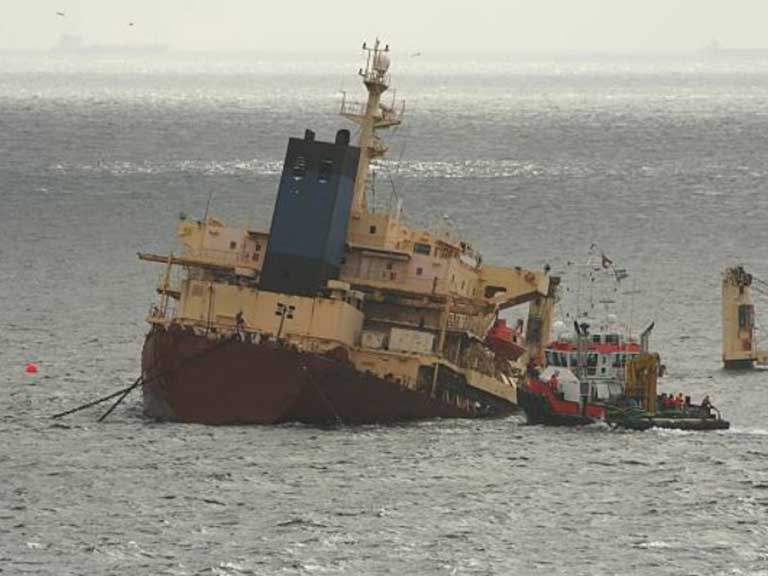Marine salvage airbags are devices that are filled with air to help lift a sinking or stranded ship. They work like big inflatable life preservers but are made for large ships and heavy objects. Henger’s Marine Airbags are made of strong, multi-layered rubber. These materials enable the airbag to cope with a wide range of harsh underwater environments.
These airbags are widely used in marine salvage operations. Common applications include shipwreck rescue, bridge platform construction, and underwater pipeline laying. As an important tool, they help to recover heavy objects from the water quickly and economically.
Whether it’s the rescue of a sunken ship or the salvage of a submerged structure, Henger’s airbags offer a flexible and efficient solution. In addition, we offer a variety of sizes and specifications for different types of salvage operations. This ensures that we can meet the needs of a wide range of complex environments.
Table of Contents
Understanding Marine Salvage Operations
The design of marine salvage airbags is similar to that of ship-launching airbags. They are quite strong and may be utilized as floating salvage buoys for both salvage and floating. Marine salvage airbags can be used to save ships, pontoons, dock projects, and other floating structures that have sunk. The strong marine airbags are the best solution for heavy salvage work in bad weather.
The marine salvage airbag is a buoyancy device that is closed and shaped like a cylinder. It has a robust outside layer of rubber that can stretch, many layers of heavy-duty synthetic tire cord cloth, and a firmly vulcanized inner layer of rubber. Also, the airbag is held in place via slings and shackles. When the marine airbag is utilized in deep water, safety valves at both ends of the airbag can let out pressure from inside the airbag.
Henger’s marine airbags are made of strong, multi-layered rubber. These materials enable the airbag to cope with a wide range of harsh underwater environments. Also, our marine airbags function especially well for buoyancy tasks like floating pipes, hauling boats to the shore, and crossing rivers.
When the water level is low, these marine airbags may also be used to lower the draft of ships and platforms. In addition, they can also be utilized as salvage pontoon bridges for temporary bridges and piers. Marine salvage airbags can be used by rescue teams to save ships, pontoons, and pier structures that have sunk.
The Science Behind Marine Salvage Airbags Work
Marine salvage airbags are a crucial tool in rescue operations, relying on complex scientific principles to function effectively. We utilize these airbags to provide buoyancy assistance by attaching them to the shipboard or inserting them into cabins. The lifting process is carefully controlled to ensure safe and efficient operation.
Buoyancy Principles in Marine Salvage
The principle of buoyancy is fundamental to the operation of marine salvage airbags. According to Archimedes’ Principle, the buoyancy force on an object submerged in a fluid is equal to the weight of the fluid that the object displaces. Our airbags are designed to displace water, thereby generating upward buoyancy. This can help lift sunken or stranded vessels.
The distribution of air within the airbags is critical for maintaining stability during lifting operations. Reasonable air distribution ensures that lifting force is applied evenly. This reduces the risk of the salvaged vessel tilting or being subjected to uneven forces.
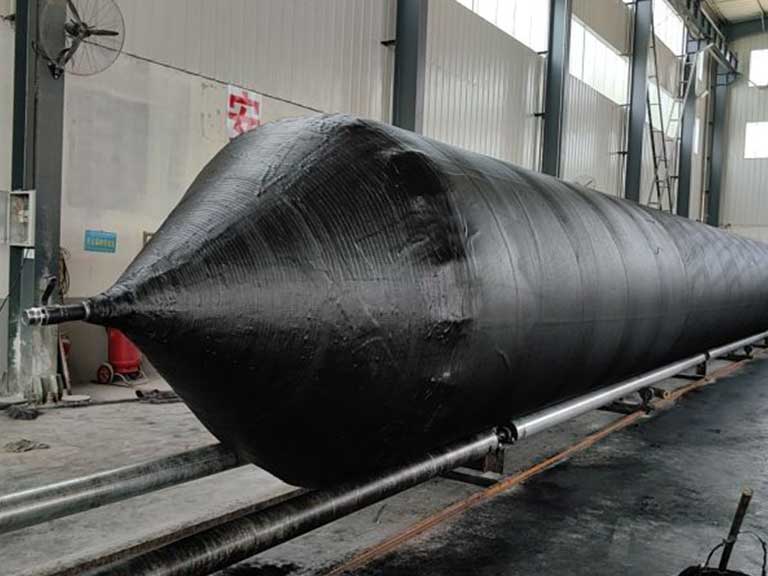
How Airbags Generate Lifting Force
Our marine salvage airbags generate lifting force through the controlled inflation of compressed air. As the airbags inflate, they displace water, creating a buoyant force that lifts the vessel. The lifting speed is typically controlled at 1 meter per minute to allow for proper pressure equalization and safe operation.
The pressure relief valve discharges the expanded air during the ascending process. This prevents the airbag from rupturing and plays a crucial role in maintaining safe operating conditions. The design of the airbags optimizes lifting force for various applications, from concentrated point lifting to distributed support under vessel hulls.
- Controlled inflation and pressure management enable airbags to convert compressed air into a powerful lifting force.
- The role of pressure relief valves is critical in preventing airbag rupture during ascent.
- Lifting speed is carefully controlled to ensure safe and efficient salvage operations.
Types of Marine Salvage Airbags
Various types of marine salvage airbags are utilized in salvage operations to cater to different needs and conditions. These airbags are crucial for lifting and recovering sunken vessels or objects from underwater. The selection of the appropriate type of airbag is vital for the success of the salvage operation.
- Totally Enclosed Marine Salvage Airbags: Totally enclosed marine salvage airbags are designed for operations where the environment demands high levels of containment. These airbags are completely sealed, preventing water and debris from entering. As a result, they provide a clean and controlled salvage environment.
- Marine Salvage Rubber Airbags: Marine salvage rubber airbags are made of durable rubber material. Therefore, they can withstand harsh marine environments. They are versatile and can be used for a variety of salvage operations. These include lifting and refloating vessels.
- Pillow Flotation Lift Bags: Pillow flotation lift bags are designed to provide substantial buoyancy while being relatively compact. They are easy to deploy and can be used in various salvage scenarios. These include underwater construction and vessel recovery.
- Steel Salvage Pontoons: Steel salvage pontoons are robust and reliable lifting solutions used in marine salvage operations. They offer significant buoyancy and are often used for large-scale salvage projects. These include the recovery of sunken vessels and heavy underwater equipment.
- Parachute Underwater Lift Bags: The parachute underwater lifting bag is a specialized buoyancy device shaped like a water droplet. It is specifically designed for deep-water salvage operations and professional diving work. Its open-bottom design automatically balances pressure during ascent. This ensures safe use at any water depth.
These lifting bags are essential for controlled underwater lifting tasks. They can be used for commercial and military salvage operations. They can be deployed for static lifting, secured to anchor points, or dynamic lifting, moving with the load.
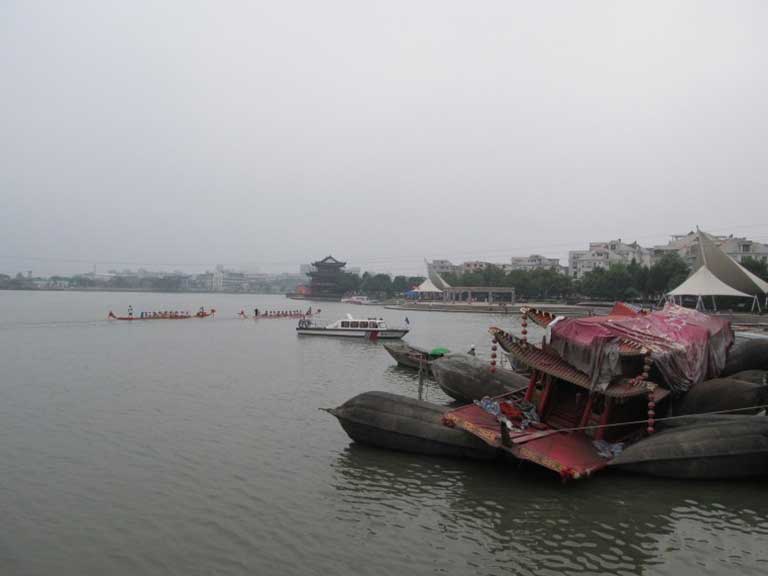
Applications and Techniques of Marine Salvage Airbags
Marine salvage airbags are multifunctional and highly efficient. As a result, they have become an indispensable tool in various marine salvage operations. We utilize these airbags in a range of applications, from raising submerged vessels to supporting underwater construction projects.
- Raising Submerged Vessels: Raising submerged vessels is a complex operation that requires precise planning and execution. Marine salvage airbags play a crucial role by providing the necessary buoyancy to lift the vessel. First, deploy these airbags around the submerged vessel. Once inflated, the airbags will generate the lift needed to bring the vessel to the surface.
- Refloating Stranded Ships: When a ship becomes stranded, refloating it quickly is essential to prevent further damage. Marine salvage airbags to provide the additional buoyancy needed to refloat the stranded vessel. Airbags are placed under or around the vessel, and their inflation is strictly controlled. This ensures a stable and safe floating process for the vessel.
- Supporting Underwater Construction: Marine salvage airbags can also be used in underwater construction projects. They can be used to support heavy objects and assist in the installation of complex structures. These airbags provide temporary buoyancy during the construction phase. Ultimately, they ensure the safe and efficient placement of building materials and equipment.
- Emergency Salvage Operations: In emergency salvage operations, marine salvage airbags play a crucial role. For example, in post-disaster recovery or stabilizing ships after accidents. Rapid deployment of these airbags can provide immediate buoyancy and stabilize damaged ships. This can prevent further environmental damage while allowing for the development of a more comprehensive salvage plan.
In summary, marine salvage airbags have a wide range of applications. They are crucial to the success of various marine salvage operations. Maritime personnel can rely on these versatile tools to effectively salvage submerged vessels, refloat stranded vessels, support underwater construction, and assist in emergency salvage operations.
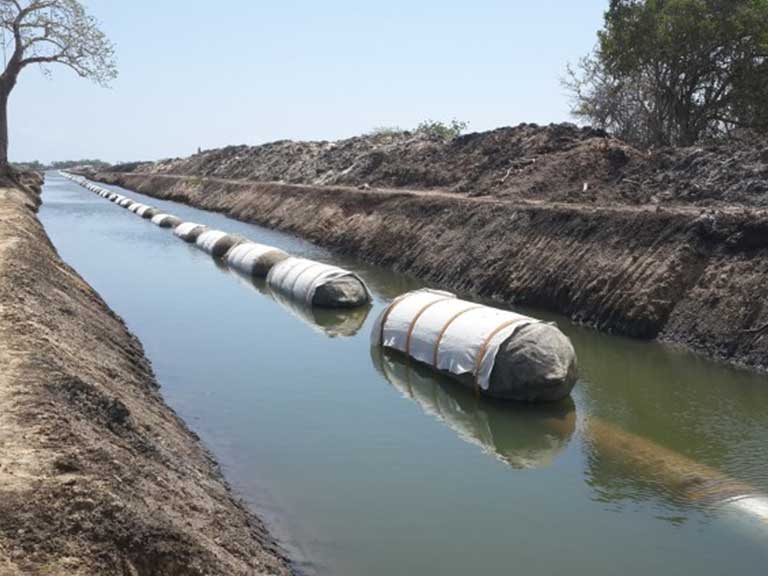
Operational Considerations When Using Marine Salvage Airbags
Marine salvage airbags are critical tools in the maritime industry. Their successful deployment hinges on understanding key operational considerations. We emphasize the importance of adhering to strict guidelines. This ensures the safe and effective use of these airbags in a variety of marine operations.
Safety Protocols and Best Practices
The safe operation of marine salvage airbags is paramount. We follow strict safety procedures, including regularly checking airbags for any signs of damage or wear. In addition, all connections should be secure, and airbags should be deployed according to the manufacturer’s instructions. The use of high-quality rubber and steel materials in the construction of these airbags enhances their durability and performance.
- Conduct thorough pre-deployment inspections to check for material integrity and valve functionality.
- Ensure all personnel are trained in the proper deployment and operation of salvage airbags.
- Use marine salvage airbags in accordance with established safety protocols to prevent accidents.
Proper Installation and Deployment Methods
The effectiveness of salvage airbags depends significantly on their proper installation and deployment. We ensure that air lift bags are correctly positioned and securely attached to the vessel or object being salvaged. The deployment process is carefully planned and executed to ensure that the required lift is achieved. Furthermore, this does not damage the airbag or surrounding structures.
| Deployment Factor | Description | Importance Level |
| Airbag Positioning | Correct placement under the vessel | High |
| Inflation Rate | Controlled inflation to achieve desired lift | High |
| Attachment Security | Secure attachment to prevent airbag displacement | High |
Maintenance and Storage Requirements
To ensure the service life and reliability of marine rescue airbags. We should strictly follow maintenance and storage procedures. This includes regular cleaning and drying after use. This is especially important after contact with seawater to prevent material degradation and corrosion of metal parts. The airbags are stored in a dry, cool place, protected from UV damage and extreme temperatures.
- Clean and dry airbags after each use to prevent corrosion and material degradation.
- Store airbags in a cool, dry place, away from direct sunlight and extreme temperatures.
- Regularly inspect stored airbags for signs of damage or deterioration.
By following these operational considerations, we can maximize the effectiveness and lifespan of our marine salvage airbags, ensuring they remain a reliable tool in our salvage operations.
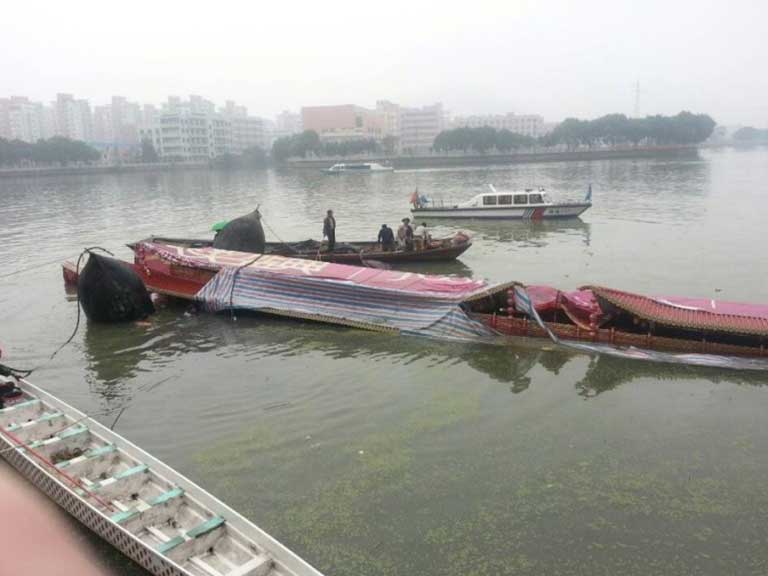
Conclusion
Marine Salvage Airbags play a key role in marine salvage operations, especially in heavy objects and deep-sea salvage. They create strong buoyancy, helping shipwrecks and large underwater structures to resurface.
Henger’s rubber salvage airbags are flexible and can be used for different types of salvage tasks. In addition, our multi-layer rubber design ensures durability in harsh environments. They are more cost-effective than other salvage equipment.
Whether you are rescuing a wreck or working underwater, Henger’s marine salvage airbags are an efficient, safe, and cost-effective solution.
FAQ
What are the primary benefits of using lift bags in salvage operations?
A lifting bag is a reliable and efficient means of generating lift. It can salvage sunken or stranded vessels while minimizing environmental impact to the greatest extent possible.
How do marine salvage airbags compare to other types of lifting equipment?
Compared to traditional steel or buoyancy-based lifting solutions, marine salvage airbags offer greater flexibility and durability. This makes them an ideal choice for complex salvage operations.
What factors should be considered when selecting marine salvage bags for salvage operations?
Key considerations include the size and weight of the vessel, water depth, and environmental conditions. In addition, the required lifting capacity and buoyancy must also be taken into account.
How are salvage airbags typically deployed during salvage operations?
Salvage airbags are typically deployed underwater, where they are inflated to generate the necessary lifting force. They are then connected to the vessel or object being salvaged.

